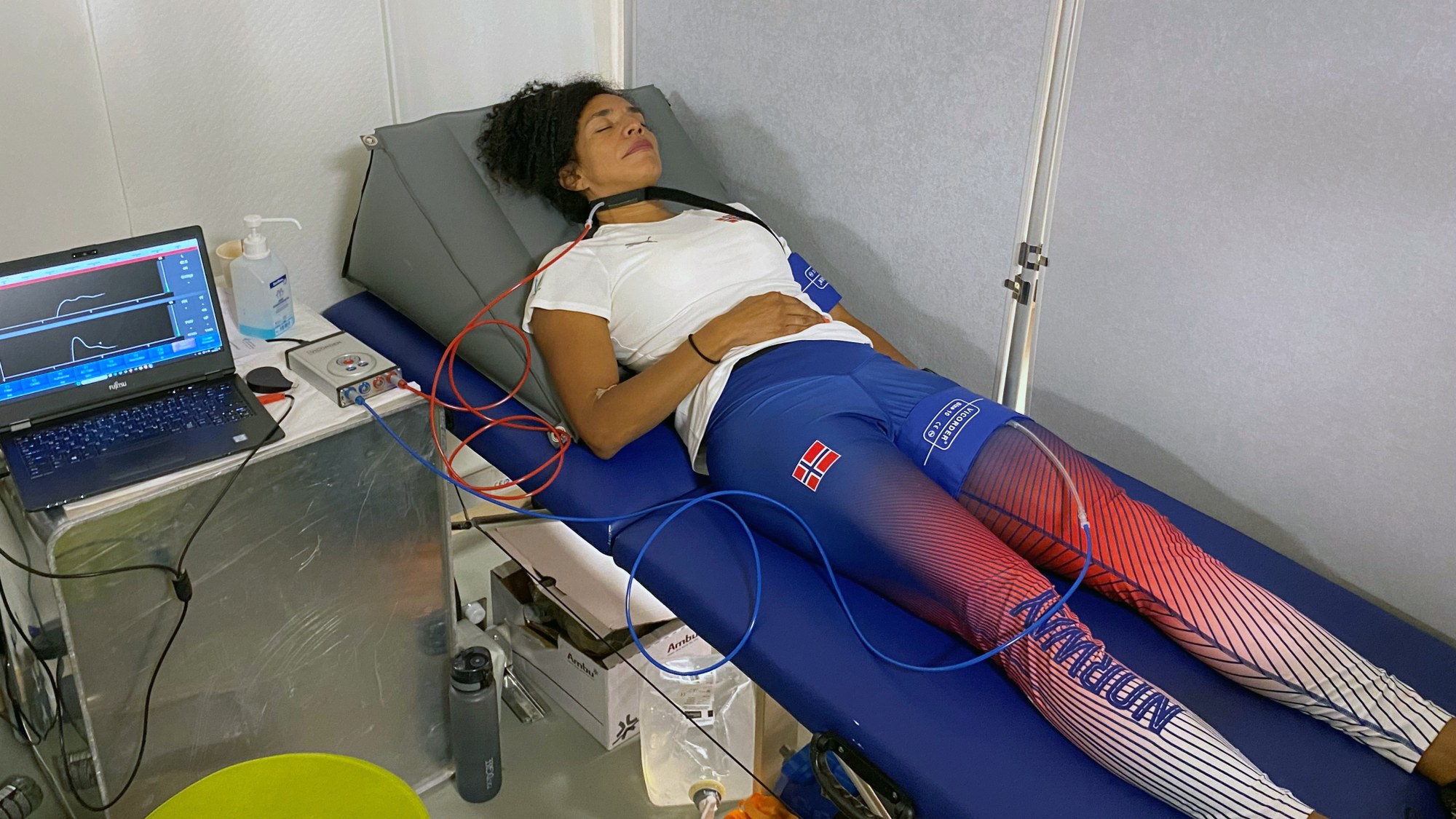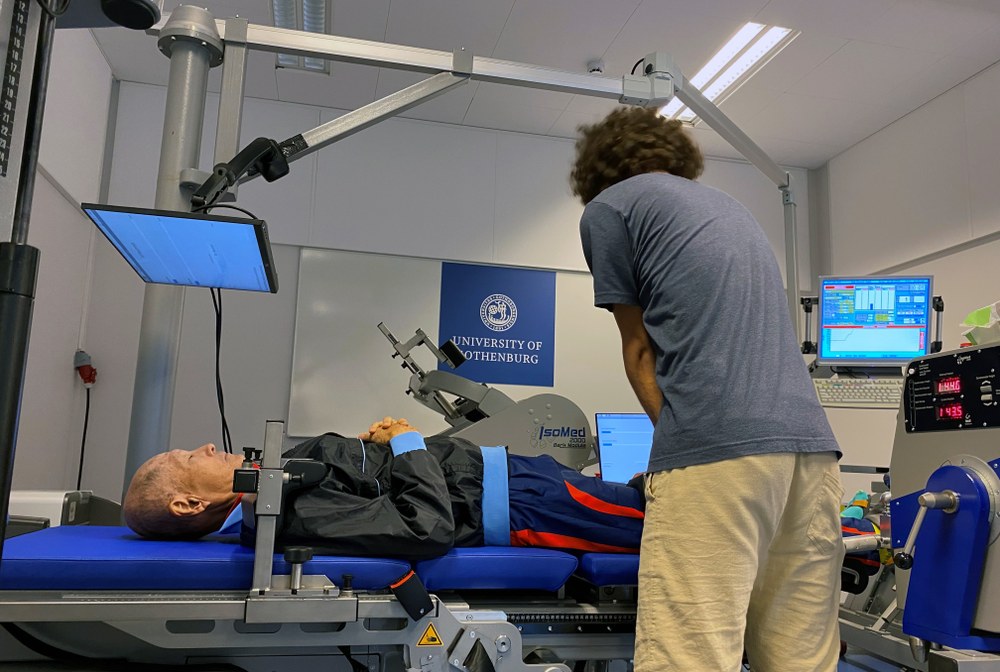Sport for older athletes: WMAC competitors go flat out for science in TaFMAC study

While many people start doing less physical activity as they get older, senior athletes often remain active in competitive sports well into their eighties. In the Track and Field Masters Athletics Cohort (TaFMAC) project at the DLR Institute of Aerospace Medicine, researchers are working with global partners to collect data from these athletes in order to better understand the advantages and disadvantages of competitive sports as we get older. Related studies are regularly carried out for this purpose at international athletics championships.
Researchers have been conducting the TaFMAC study at the World Masters Athletics Championships in Gothenburg, Sweden, for over a week. Here we provide an insight into the processes involved and the methods used to examine senior athletes at the various analysis stations.
A matter of the heart

One of the more extensive examinations is conducted at the 'Heart and Vessel' station, where researchers assess the health of the test subjects' hearts and blood vessels. In addition to a standard ultrasound of the heart at rest, a further ultrasound is carried out during physical exertion, with the test subjects lying on their left side and cycling. This stress echocardiogram shows the difference between healthy hearts in non-athletes and trained athletes. In most of the test subjects examined so far, the heart muscle is significantly thicker. This usually occurs in older athletes who train regularly, and the results show that this training pays off – most of our test subjects are above the average level of fitness and cope very well with the challenge of pedalling while lying on their side.
This vascular examination also shows that the athletes have superior readings in tests that measure 'pulse wave velocity', a technique for determining the age of blood vessels. The stiffer the vessel, the faster the pulse wave travels between the neck and thigh.
Testing physical and mental fitness

At another station, the InBody device determines weight, muscle mass, body-fat mass and fluid inside and outside the cells. The thickness of the skin on the athlete's calf is also measured using ultrasound. Here, the researchers are seeking to determine the body composition and extent of muscle loss in older athletes.
The mental fitness station tests cognitive skills such as memory, processing speed, visual attention and reaction time. The tests are carried out in the athlete's own language, with the duration adapted to their specific age. Here, too, it is already evident that the athletes are performing very well in terms of mental fitness within their respective age group.
The next station is again all about the muscles. We use the ISOMED isokinetic diagnostic and training device to assess the strength of calf muscles based on muscle contractions. After the evaluation, we can use this data to evaluate the elastic stiffness of the calf muscles and thereby collect new scientific data, which we can then compare with tests carried out at the DLR site in Cologne.

In addition to DLR employees, half of the TaFMAC study team in Gothenburg consists of international partners, including scientists from the University of Texas at Austin, USA; the University of Saskatchewan, Canada; the University of Jyväskylä in Finland; and the University of Gothenburg. Four doctoral theses by participating researchers are currently being supervised by DLR.
We are delighted with the great interest and commitment shown by the athletes. There has been a lot of demand for the testing – almost all the stations are fully booked until the end of the World Championships. At the end of the first week, 201 participants have already taken part in the study. The athletes are particularly interested in the data on heart and muscle health and general fitness. As might be expected, the athletes also like to compare themselves with one another and are keen to keep on improving. At older ages, they have retained their sporting ambition and want to be among the best.
Tags:
